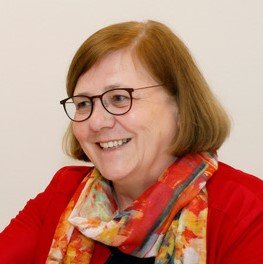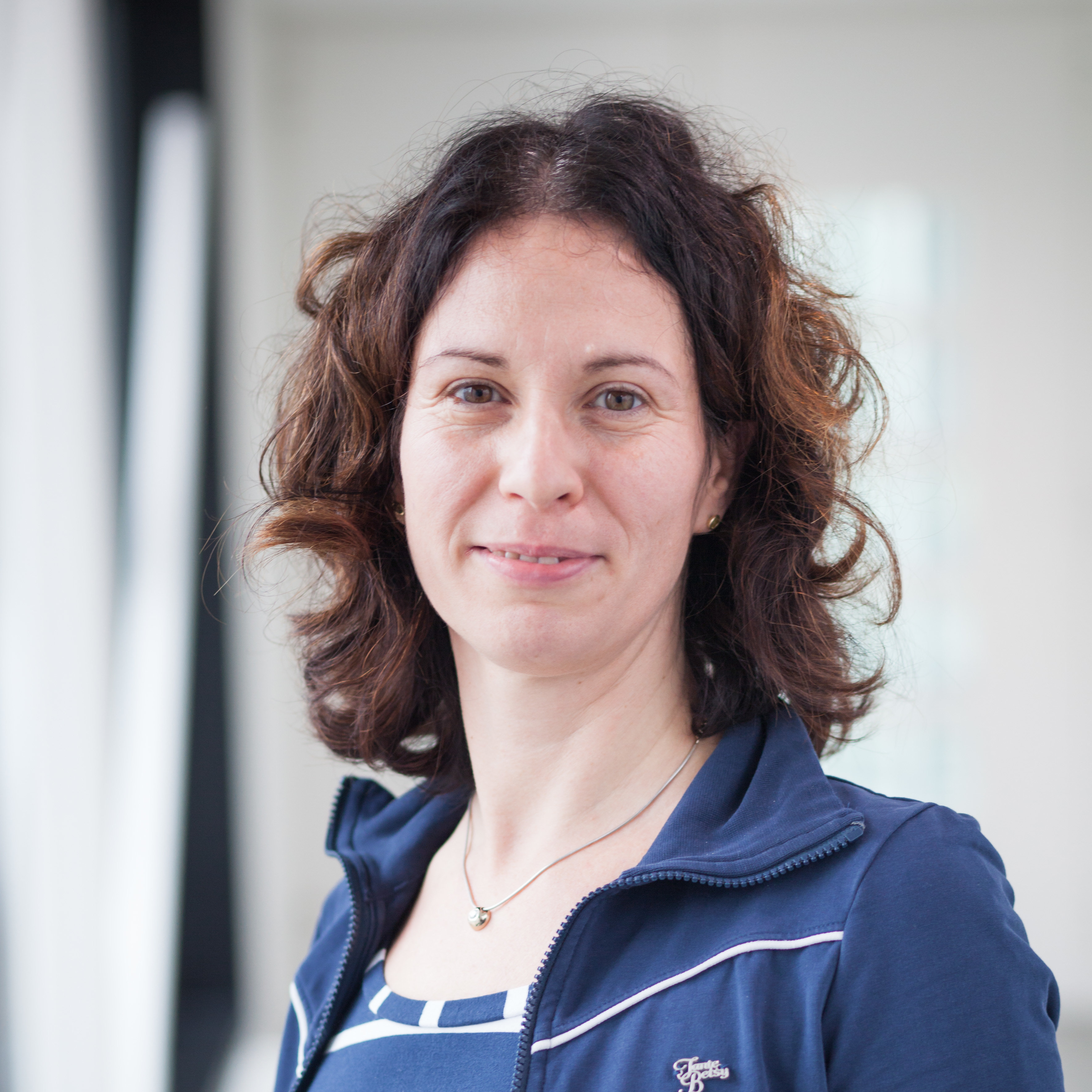We have to take more perspectives into account to meet the actual needs of society
– Co-creating in education –
In the past couple of years, many educators have experimented with moving away from the traditional classroom setting. Particularly in higher education there is a tendency to rely on a passive, teacher-centered approach. Co-creating in education aims for the exact opposite: it champions a process built on constructivist learning theory, where students are in the driver’s seat and collaborate with teachers or other stakeholders in designing their learning process.
At TU Delft, we have a variety of educators who employ co-creation in shaping their own innovative education. In fact, some teachers may be engaging in co-creation without even being aware of it. This series of interviews will showcase all the various forms both already in existence, and those yet to be uncovered in our very own TUD educational climate!

Name: Caroline Wehrmann
Programme: MSc Communication Design for Innovation (CDI)
Course: Communication Lab (C-Lab)
Faculty: TNW

Name: Eva Kalmar
Programme: Minor CDI
Course: Communication Lab (C-Lab)
Faculty: TNW
This requires a transdisciplinary approach, and that’s not always something that they’re used to …
To Caroline Wehrmann and Eva Kalmar, co-creation means providing students with the opportunity to learn and collaborate across disciplines and beyond. It’s one of the stand-out elements of the programme they offer – whether it’s the minor version, or the actual Master’s Degree in Communication Designed for Innovation. “We start teaching students to take different perspectives on specific things. Then, we focus on system thinking, design and designing solutions for socio-technical problems.” One course in particular, Communication lab (C-lab), sees students work in groups on authentic cases. In order to succeed, they need to be able to collaborate with students from other disciplines, and the case owners. “This requires a transdisciplinary approach, and that’s not always something that they’re used to. The cooperation is so important, between these different disciplines, but also beyond that with the case owners.”
It offer students an opportunity to learn from each other, and to develop new skills. “Usually, it’s a paradigm shift for students who come from the hard sciences, like aerospace engineering, or computer science. For students who have experience with design, it’s also challenging because co-design is still not the norm, and they are unfamiliar with integrating communication theories in the design process,” Eva explains. Getting the opportunity to see other perspectives by talking with the case owners, may paint a completely different picture of the authenticity of certain challenges, and their complexity. “It’s interesting for students – they interview one person and take it as their reality, as truth. Then they interview another person saying something slightly different, and they start panicking – what do I do with this conflicting information? For students it’s really shocking to see that different people hold different perspectives, but as a collective you need to still be able to function well. That’s normal at most working spaces, but to them it’s a steep learning curve in working together with stakeholders.”
For Eva, the realization as to why the involvement of others in creating knowledge is so important came during the Science Communications Master’s Degree, the former version of the CDI Master. She’s originally a biologist, but became interested in understanding why technological innovation was not implemented. She realized that in order to make any design work, you need to understand people and society. “You have to figure out who you’re doing it for, collect information and involve them in the process. Otherwise, you’ll just end up spending a lot of money creating something which may go unused or get refused.”
… Generating knowledge together is a difficult thing for everyone, and for students it can be hard to figure out where their knowledge base and that of the professional meet …
In other words, co-creation is a necessary skill that students need to be gradually introduced to in the programme. For that reason, the level to which co-creation is applied differs per course and the complexity of the case. “In the first courses it’s just about learning the definition of co-creation, or the basic idea of defining the problem together. Later on, it’s creating something for the potential user with the potential user. That’s the more dynamic, hardcore co-creation where all parties have something to say,” Caroline explains. “At the beginning of the Master programme, we can’t start with the most complex issues or aspects. Generating knowledge together is a difficult thing for everyone, and for students it can be hard to figure out where their knowledge base and that of the professional meet. They have to find out during the process how people work in practice.”
Eva and Caroline aim to feed or awaken their students’ sense of curiosity and reflection through all of these experiences. During the thesis project, at the end of the Master programme, students apply the knowledge and insights they gained throughout the courses. Caroline gives an example of such a thesis project: designing a new building complex that was going to house both elderly people and people from all kinds of nationalities. “The student’s challenge was how to involve people throughout the process. People from the municipality, building organizations, as well as the elderly people themselves needed to take part in the development. They had to figure out how to make this collaboration possible, how to get people on board – for example, who is the spokesperson for the elderly? How do we make sure that people from different levels of knowledge and different perspectives can work together over a longer period of time?”
…[we] have to take more perspectives into account to meet the actual needs of society…
As a result, the CDI programmes challenge students to become more aware of their own role in society, and the role of technological innovation at large. “Students often lack information and the skills to think about what their research outcome could mean for society.” Caroline refers to a previous conversation with a student, who’s developing a device meant to warn people in crisis situations of fire hazards. “The first thing I asked her was, ‘who’s going to use this tool, and did you talk to the fire department about this? And her response was – ‘is that possible? Also, my assignment is to make this device as precise as possible, not to think about who is using it and how.” To Caroline, it’s exemplary of the pitfalls of traditional engineering teaching. Without context, a tool is just a tool. “Most students learn to deepen their knowledge, but they also need to know how to take more perspectives into account to meet the actual needs of society. This is why we created the CDI Master.”
It’s a challenge to adapt to the situation, and keep my ideas to myself
In contrast to the classical engineering education, it’s imperative to guide students through the process of co-creation and help set realistic goals and expectations. To some lecturers, this coaching role may come more naturally than others – and Caroline and Eva acknowledge it can be frustrating at times, too. “It’s a challenge to adapt to the situation, and keep my ideas to myself,” Eva poses. “It’s not my job to share what I would’ve created. Let them grow, and only interrupt if they’re truly failing. There’s not one “right” answer – there’s so many different alternatives and options.” And that also requires flexibility when it comes to assessment, Caroline adds. “We spend a lot of time on personal professional development, but it’s hard to assess students on that, as it’s such an individual process. It’s a challenge each time.”
Introducing co-creation into education indeed means having to embrace uncertainty. Each year the assignments themselves keep changing due to the different questions, challenges, urgencies and stakeholders involved. Similarly, so do the needs of the students and their backgrounds or level of experience. Perhaps this illustrates the main downside to co-creation in education. While it enriches the learning experience of the students and teaches them to seek out and embrace different perspectives, it also asks for a bigger investment from both students and teacher. Aside from the preparatory work in outreach and stakeholder management, there’s a lot of guidance involved on the side of the educator. The focus on personal and professional development requires room for individual attention, teamwork support, and a safe space for vivid discussion and reflection.
… the growth we see in students makes it all worthwhile
While co-creation does require more work, Eva and Caroline agree that it’s absolutely worth the investment – for students and teachers both. “I think if students can find their own niche within the challenge that intrigues them, students are willing to sacrifice more time. Because they get more out of it as well, they appreciate it afterwards”. Caroline nods in agreement. “For me as a lecturer, the most rewarding part is to make sure you adapt your way of teaching to the students’ needs. How can you provide them with the knowledge they need so they can put things into practice and perspective? It should be a prerequisite that lecturers are curious about how their students think and work. If you have that intrinsic motivation, it feels good to put some extra effort into this – the growth we see in students makes it all worthwhile.”